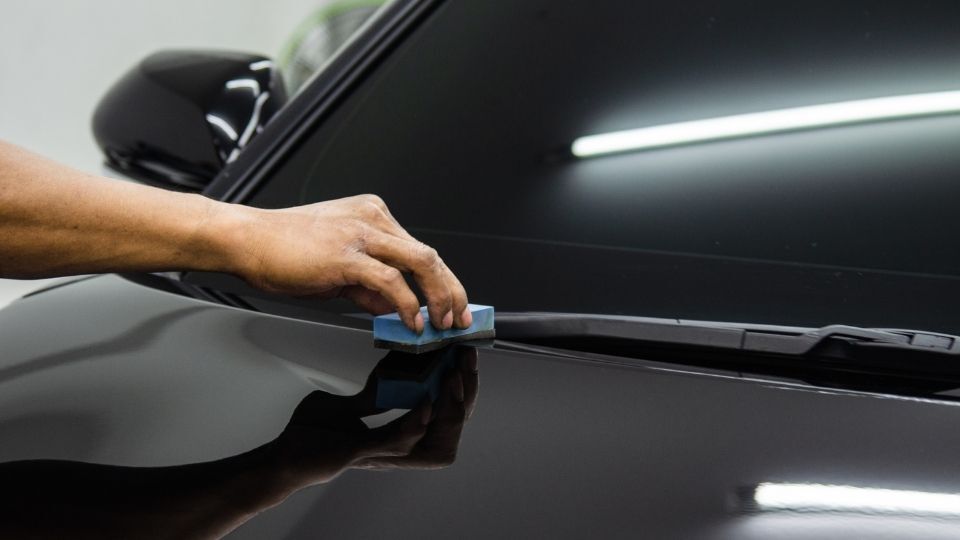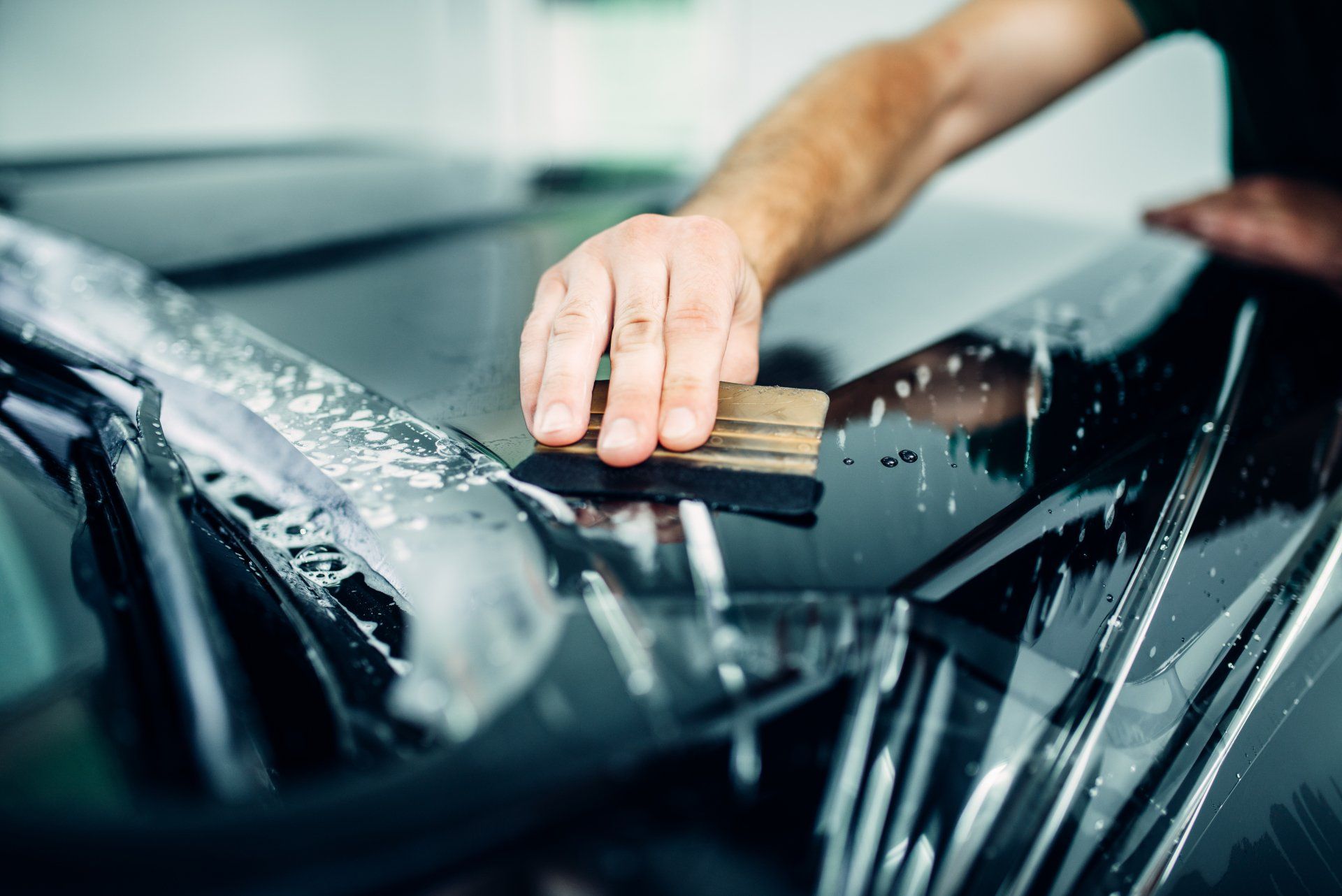Protect Your Car from the Elements with Ceramic Coating Technology
Protect Your Car from the Elements with Ceramic Coating Technology
Blog Article
Ceramic Layer vs. Conventional Wax: Which Supplies Better Long-Term Security?
The argument in between ceramic finishes and conventional wax for vehicle security has gathered considerable focus among auto fanatics and professionals alike. While both serve the purpose of guarding paint, their distinctions in durability, application, and lasting upkeep expenses might affect a consumer's selection. Ceramic finishings boast remarkable longevity and resistance to ecological aspects, yet the intricacy of their application increases questions about ease of access and practicality. As we explore these contrasting options, it ends up being crucial to think about not just the immediate advantages yet additionally the effects for lorry treatment gradually.
Summary of Ceramic Finish
Ceramic finishing has obtained considerable appeal among auto lovers and detailers alike as a result of its sophisticated safety qualities. This cutting-edge technology is made to produce a sturdy, hydrophobic shield over an automobile's paint surface, substantially boosting its resistance to environmental pollutants such as dust, UV rays, and chemical stains. Unlike standard wax, which provides a short-term layer of protection, ceramic coatings bond at a molecular level with the paint, using long-lasting sturdiness-- usually extending beyond 2 years with correct upkeep.
The application procedure includes thorough prep work of the car's surface area, including cleansing and polishing to make sure ideal bond. When used, the finish cures to develop a robust layer that not only includes deepness and gloss to the paint yet additionally simplifies upkeep. With its hydrophobic residential or commercial properties, ceramic finish permits water and dust to move off even more conveniently, reducing the frequency of cleans and reducing the risk of swirl marks.
Furthermore, ceramic finishings are offered in different formulas, enabling individuals to select products tailored to their specific demands and choices. Generally, ceramic layer stands for a substantial innovation in paint protection technology, delivering premium efficiency contrasted to traditional options.
Introduction of Typical Wax
Traditionally pertained to as a staple in auto treatment, wax works as a prominent option for those looking for an uncomplicated technique to boost and secure their lorry's paint - ceramic coating. Automotive wax commonly makes up natural ingredients, such as carnauba, or synthetic compounds, designed to produce a safety layer on the surface area of the paint. This layer not only enhances the car's gloss and shine but also offers a barrier versus ecological contaminants
The application of wax is usually user-friendly, making it available for both specialists and DIY fanatics. Once applied, wax calls for a healing duration, after which it hardens to develop a protective shell.
Nonetheless, while wax works for boosting the aesthetic allure of a lorry, it is essential to keep in mind that the security it uses might demand more constant reapplication contrasted to alternate products, such as ceramic coatings. In general, typical wax remains a preferred alternative for those prioritizing simplicity of use and immediate aesthetic renovation.
Resilience and Longevity Comparison
While both ceramic layers and conventional wax deal protective advantages for vehicle paint, their durability and longevity vary substantially. Typical wax, commonly made from natural carnauba or synthetic polymers, typically offers a protective layer that lasts roughly 3 to six months. This fairly brief life expectancy demands normal reapplication to keep optimum protection.
On the other hand, ceramic layers are engineered from sophisticated nanotechnology, developing a covalent bond with the paint surface. This results in a durable, hydrophobic layer that can sustain for two to 5 years, relying on the item and environmental problems. The premium resilience of ceramic layers is connected to their chemical structure, which offers boosted resistance to scrapes, UV rays, and oxidation.

Defense Versus Ecological Variables
Safeguarding a lorry's paint from ecological elements is critical for maintaining its look and value gradually. Vehicles are regularly revealed to a variety of elements, including UV rays, bird droppings, tree sap, acid rain, and roadway grime, every one of which can jeopardize the integrity of the paintwork.
Ceramic finishes give a robust protection against these ecological aggressors. Unlike standard wax, which can deteriorate rapidly under UV exposure, ceramic finishes develop useful reference a sturdy, hydrophobic layer that stands up to the harmful effects of sunlight and toxic wastes. This advanced technology creates a chemical bond with the automobile's surface, offering exceptional defense that lasts for many years, even in severe problems.
Conventional wax, while much easier to apply, typically calls for regular reapplication and supplies minimal resistance to contaminants and UV rays. In time, it can break down, leaving the paint susceptible to scrapes and oxidation. On the other hand, ceramic finishes maintain their protective high qualities longer, substantially decreasing the threat of paint damage and making certain that the vehicle keeps its aesthetic appeal. As a result, ceramic coverings are significantly recognized as the exceptional option for long-term defense versus environmental elements.
Application and Upkeep Differences
The methods of application and succeeding upkeep for ceramic coverings and typical wax differ substantially, influencing the total customer experience and efficiency of each product. Ceramic coverings require a more intricate application process, commonly entailing surface area prep work that includes cleaning, sanitizing, and polishing the automobile. When the surface is prepared, the ceramic covering is applied in a regulated atmosphere, frequently requiring expert expertise to make certain correct treating and bonding to the paint.

While both items boost automobile look, the longer-lasting defense offered by ceramic coverings may validate their preliminary financial investment, regardless of the even more requiring application procedure. Alternatively, typical wax continues to be a prominent selection for those looking for a less complex, albeit temporary, remedy.

Conclusion
Finally, look here ceramic finishings show considerable benefits over typical wax in regards to sturdiness and environmental management. With a life-span expanding two to five years and exceptional resistance to UV rays, dirt, and chemical spots, ceramic layers provide a more effective service for lasting car maintenance. Although the application process may require expert competence, the resulting expense savings and minimized frequency of reapplication highlight the value of ceramic coverings for those looking for optimum automobile defense.
The argument in between ceramic coverings and conventional wax for vehicle protection has gathered substantial interest amongst auto lovers and experts alike. Unlike traditional wax, which supplies a short-term layer of defense, ceramic finishings bond at a molecular degree with the paint, offering long-lasting longevity-- often expanding past two years with proper upkeep.
While both ceramic finishings and traditional wax deal protective advantages for vehicle paint, their durability and long life vary considerably. For automobile fanatics seeking long-lasting security, ceramic finishes present an engaging benefit over typical wax products.
In verdict, ceramic coverings show significant advantages over typical wax in terms of sturdiness and environmental defense.
Report this page